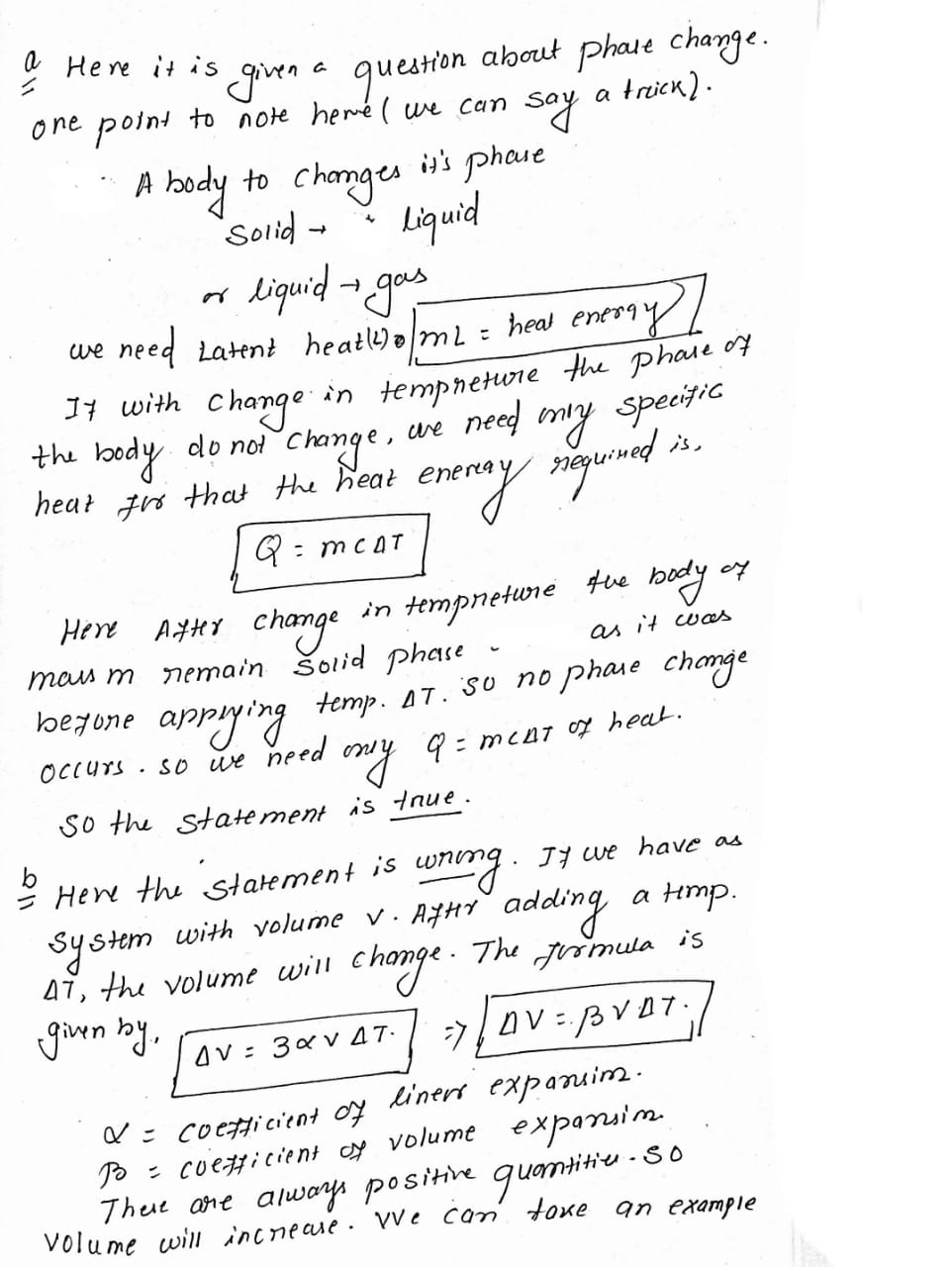Judge the statements below in true (T) or false (F): a) ( ) A given body of mass m and specific heat c , is initially in the state solid and at the temperature of absolute zero i.e, 0 K. If its temperature is increased of ∆T and it remains in the solid state, we can say that at the end of the process of heat transfer the body received an amount of heat Q = mc ∆T. b) ( ) Consider a certain amount of matter that occupies a volume V. If this matter is subjected to an increase in temperature ∆T, we can say physically that its volume V will not always increase due to thermal expansion. c) ( ) Given a system of mass m and specific heat c, if we provide a amount of positive heat Q to the system, so it is correct that the system will increase its temperature by a certain ∆T.
Judge the statements below in true (T) or false (F):
a) ( ) A given body of mass m and specific heat c , is initially in the state
solid and at the temperature of absolute zero i.e, 0 K. If its temperature is increased
of ∆T and it remains in the solid state, we can say that at the end of the process
of heat transfer the body received an amount of heat Q = mc ∆T.
b) ( ) Consider a certain amount of matter that occupies a volume V. If this
matter is subjected to an increase in temperature ∆T, we can say physically
that its volume V will not always increase due to thermal expansion.
c) ( ) Given a system of mass m and specific heat c, if we provide a
amount of positive heat Q to the system, so it is correct that the system
will increase its temperature by a certain ∆T.
d) ( ) Three materials of identical masses are placed, one at a time, inside the a special freezer that can extract energy from a material at a certain rate
constant. During the cooling process, each material starts in the state
liquid and ends up in the solid state. The figure below shows graphs of temperature T
versus time t for the three materials. In this case, it is correct to say that for the
material 1, the specific heat for solid state is higher than for liquid state
and, that the specific heats c1, c2 and c3 in the liquid state, for the three materials, are
such that c2 > c3 > c1.
e) ( ) When you heat the air inside a container, with walls perfectly
adiabatic and, double your temperature in Kelvin so your temperature too
double in Celsius.

As you have asked a question with multiple subpart, we will provide you answer for the first 3 subpart. to get the remaining question's answer please re post the whole question and specify the subpart to be solved.
to be solved.
Step by step
Solved in 2 steps with 2 images
